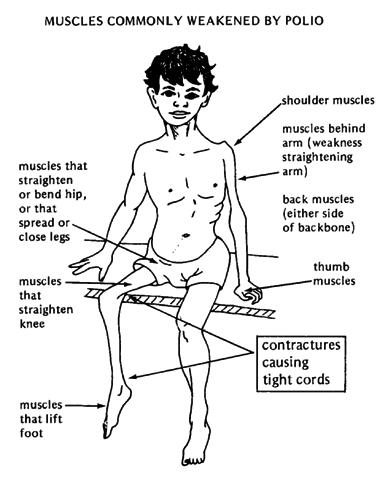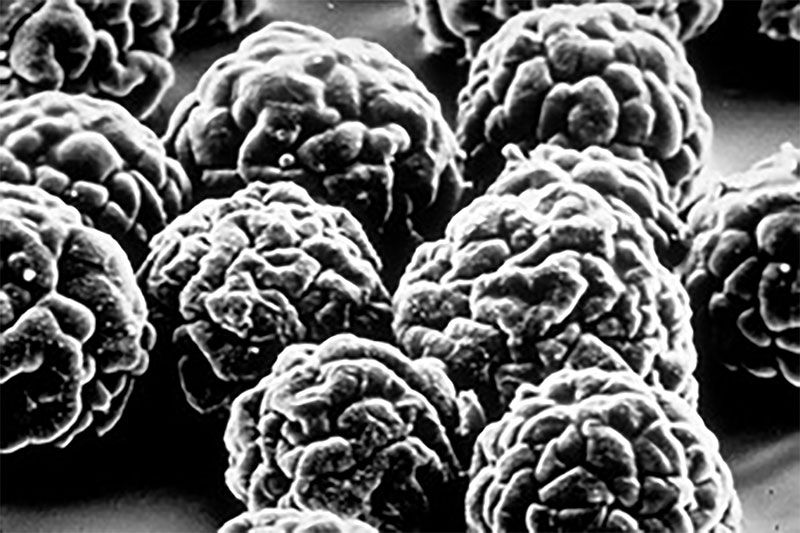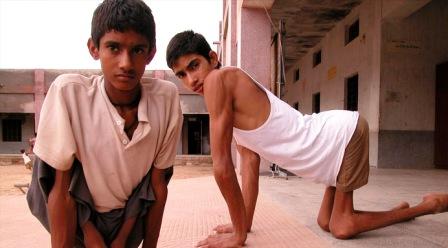There was a kid who was very lively and active. The kid used to run and play all day long. He laughed and the whole family laughed with him. One day the kid suddenly fell down while running and didn’t get up. The mother started screaming, father was also weeping hard. No, the kid was not dead but his body refused to move. Parents took him in their lap and ran… they ran to the doctors, to the quack, to the temple, mosque, church and even to the man who was said to have magical powers. No one knows what worked but the kid started recovering. Although the kid was not able to run but he started walking slowly holding the finger of his father. Not as active as before but he was lively again. The mother thanked gods a thousand times. She kissed her son on forehead and with tears of happiness in her eyes — she assured him, “The bad spell is over; it will not be able to touch my son again”.

A not-so-old man lying on his bed wants to get up but he is unable to do so. He looks tearfully to his daughter who is preparing some homemade medicine that she believes would cure her father as she read about it on the internet. His wife seems exhausted… she has been running from one doctor to another since last month. In fact she has been running to the doctors with her husband, for a long time, due to his deteriorating health that eventually confined him to the bed. It was very easy for doctors to say ‘incurable’ but it’s tough like hell for the family to accept the truth. This was a completely new experience for the mother-daughter duo. But the man was re-living the past. He was going through all the pains for the second time. He knew this was the bad spell which his mother had promised will never come back… but it came back after so many years.
* * *
Does the first part of the story sounds familiar to you? Have you or any of your loved ones also been cursed by that bad spell which left you (or them) paralyzed and which doctors have named polio virus? Yes, polio virus is that bad spell. It affects the nervous system of its victim. Soon the muscles controlled by the affected nerves become dysfunctional. The polio survivor has to live with a partially paralyzed body. However polio virus gets inactive after the initial attack(s) on the victim’s nervous system.

But several years later, Post Polio Syndrome (or PPS) may come knocking again. PPS is a condition in which the muscles strength of a polio survivor gets further weakened. However, the polio virus does not play any role on Post Polio Syndrome but it may be seen as ‘second polio’.
But a polio survivor himself can restrict or lessen the effects many folds, if he is equipped with proper knowledge.
It’s nice that with the collective effort we don’t have to see infants of our society being crippled due Polio anymore. But we have many adults in our society who have survived an attack by polio virus. So, we need one more collective effort to save the polio survivors of our society from being weakened by polio again. The best we can do for the polio survivors is imparting them with proper knowledge to tackle with the constant threat of post polio syndrome.
Let us have a look at the fact sheet about Post Polio Syndrome (PPS) that affects almost 50-70% of polio survivors.
What is Post Polio Syndrome (PPS)?
Post Polio Syndrome is the subsequent weakening of muscles in polio survivors after 15-30 years of the initial polio attack. It weakens the muscles that were originally affected by poliomyelitis virus as well as the surrounding muscles that were left unaffected in the first attack. It may be seen as a tactfully attacking enemy that does not reveal itself all at once. It deteriorates a person’s physical conditions gradually, giving some periods of stability in between that makes it tough to acknowledge the deteriorating condition instantly. The effect of PPS may put hindrance to a person’s ability to perform his daily activities. PPS in its most wicked form can even make swallowing and breathing difficult for the person being affected. It may make life difficult as hell but it is rarely life-threatening… rarely someone would die due to PPS.

What causes Post Polio Syndrome?
Frankly speaking medical science has failed in recognizing the causes of Post Polio Syndrome. Researchers have tried to give theoretical explanation but none of them has been able to put out the actual fact. So the real cause of PPS is unknown till date. However one of the theory became more popular than any other. The theory speculates the weakness in muscles due to PPS may be the result of degeneration of individual nerve terminals in the motor units that have remained after the original polio illness.
How is PPS diagnosed?
You may have guessed by now that medical science knows very less about this tactfully playing physical condition. Neither they know the cause nor do they have any test to diagnose PPS. So how one knows if he has developed Post Polio Syndrome or not? Unfortunately not many doctors can detect PPS and those who can, would do so by hit-and-trial method. The doctor would first take a comprehensive medical history to confirm that the patient had polio in his childhood. After that the patient would have to go through many tests and neuromuscular examinations so that the doctor can exclude other illness and disorders that may cause similar symptoms. As for example the doctor would test a patient to make sure he is not in depression because depression to can cause unexplained fatigue as in PPS. After eliminating all such illness and disorders doctors can come to the conclusion that the patient has developed PPS.
You may wonder why you should go to the doctors if they cannot exactly diagnose PPS. The reason for visiting a physician trained in neuromuscular disorders in case you find the symptoms of PPS is very simple. The other disorders that produce symptoms just like that of PPS are generally treatable. So if the symptoms you notice are due to illness other than PPS then you may be cured!
What are the symptoms of Post Polio Syndrome?
The most important symptom of PPS is fatigue. A person starts feeling tired without doing any such tiring work. The other symptoms that can point towards Post Polio Syndrome are
- Progressive weakness in joints and muscles.
- Body aches and joint pains.
- Skeletal deformities like scoliosis.
- Increasing problem in breathing and swallowing.
- Muscular atrophy.
- Disturbed sleep cycle and sleep related breathing difficulty.
- Decreased tolerance to cold temperatures.
Who are at more risk of PPS?
Technically each and every individual who has been affected by polio is at risk of developing Post Polio Syndrome. But some of them are at more risk than others. The first factor that puts a person in high risk zone of PPS is severity of the initial illness. The more severe the initial polio — the more is the person at risk of developing PPS. Greater recovery from polio is also an attracting factor for high intensity Post Polio Syndrome. PPS can also be called gender biased as stats have shown females are more prone to be attacked hard by Post Polio Syndrome.
The above mentioned risk factors are out of control of an individual but the risk of PPS is also affected by an individual’s lifestyle. Excessive physical activities increase the risk factor of PPS. But don’t you dare to stop physical activities! Less use of muscles equally increases the risk of PPS as the more use. One needs a proper balance of physical activities to keep away from the high risk zone of PPS.
Post Polio Syndrome Treatment
The age old adage ‘Prevention is better than cure’ does not fit PPS very well as prevention is the only option for PPS rather than being the better option… there is no cure for PPS. Researchers have tried and failed to find any effective pharmaceutical treatment for PPS. Studies have shown that life management is the only option for a person to tackle with Post Polio Syndrome.
Like any other physical conditions exercises are helpful for PPS too. But the exercises should be chosen carefully as intense exercise may prove counterproductive for a polio survivor; they may further weaken the muscles rather than strengthening them.
What is meant by life management for PPS?
Life management for a person with or at risk of Post Polio Syndrome is simply, understanding the theory of ‘moderation’. You cannot let your muscles sit idle and you can also not afford to use them excessively. You cannot eat too much because you have to keep your weight in check (and cannot do heavy exercises) and you cannot eat too little because your body requires enough nutrition. You have to learn to keep a balance.
Some of the life management tips for you can be
- Exercise regularly but keep them at low intensity and take breaks in between to allow your body to rest. Keep in mind regularly does not mean daily. Take a day break after a day of workout.
- While exercising pay attention to the muscle groups that are unaffected by Polio because the polio affected muscles do not get strengthened; they may even cause harm to the surrounding muscles if you put too much pressure on them.
- Avoid those activities that cause pain or fatigue lasting for more than 10 minutes.
- Conserve energy by taking intermittent breaks while doing any physical activities.
- Use assistive devices like orthotic devices, callipers, crutches, walkers, wheelchair etc. to support your muscles and help you conserve energy because you have limited amount of it. Many are reluctant in using assistive devices but remember by using these you are not giving up to your disorder but you are tackling with it smartly.
- Adopt a lifestyle that requires you to work smart rather than hard. Take for example installing commode is smarter than wasting lots of energy in using squatting toilet that requires more energy for sitting and getting up.
- Avoid sleeping on your back. You should sleep sideways to conserve energy and protect your body from unnecessary stress. If you suffer from lower back-pain you should sleep on your stomach. But don’t sleep on back or stomach for longer period. Sleeping on back and sleeping on stomach both puts unnecessary pressure on your body thus wasting your energy.
- If your breathing is affected by PPS you may also want to conserve energy by speaking only when required. And don’t forget to add breathing exercises to your routine.
- Dress in layers to stay warm. Avoid cold temperatures as cold increases muscle fatigue. And medication for fatigue does not serve any purpose.
- Daytime sleeping or nap should be an unavoidable part of your daily routine.
- Maintain a healthy lifestyle by eating balanced diet and avoiding caffeine, alcohol and nicotine. You seriously cannot afford to be a spoiled brat.
Be conscious and informed about your physical conditions and its after effects. Manage your life well and most importantly stay happy. Stress may also lead to various problems thus aggravating your original condition.
These are some of the tips to manage PPS condition. Are you or anyone you know is affected with PPS? Please share your experience with us. Sharing and pooling knowledge helps a lot.
Use the citation below to add this article to your bibliography
"Post Polio Syndrome: Cause, Treatment and Management." Wecapable.com. Web. April 26, 2024. <https://wecapable.com/post-polio-syndrome/>
Wecapable.com, "Post Polio Syndrome: Cause, Treatment and Management." Accessed April 26, 2024. https://wecapable.com/post-polio-syndrome/
"Post Polio Syndrome: Cause, Treatment and Management." (n.d.). Wecapable.com. Retrieved April 26, 2024 from https://wecapable.com/post-polio-syndrome/

Good work done. GBU. I am also a polio victim of 55yrs age. I have polio since childhood. I wear calipers and always lookout for any latest gadgets for assistance. Lately came across a book on PPS: The Polio Paradox by Bruno, Richard L. Great reviews on amazon. Yet to reach me. Will definitely share with you.
I shall be waiting for your review 🙂